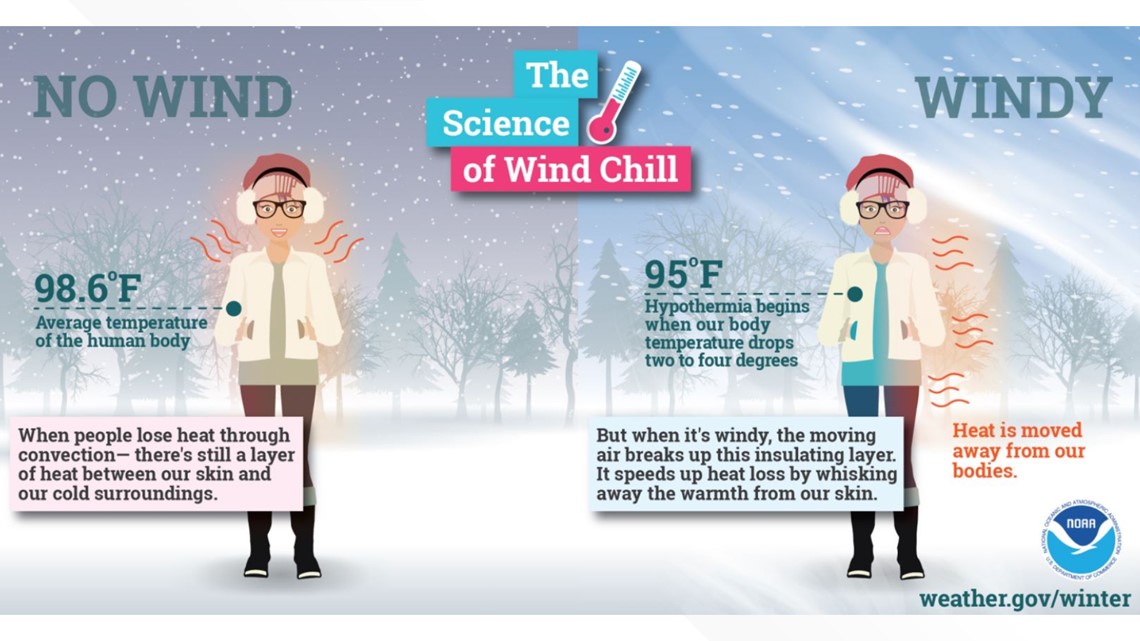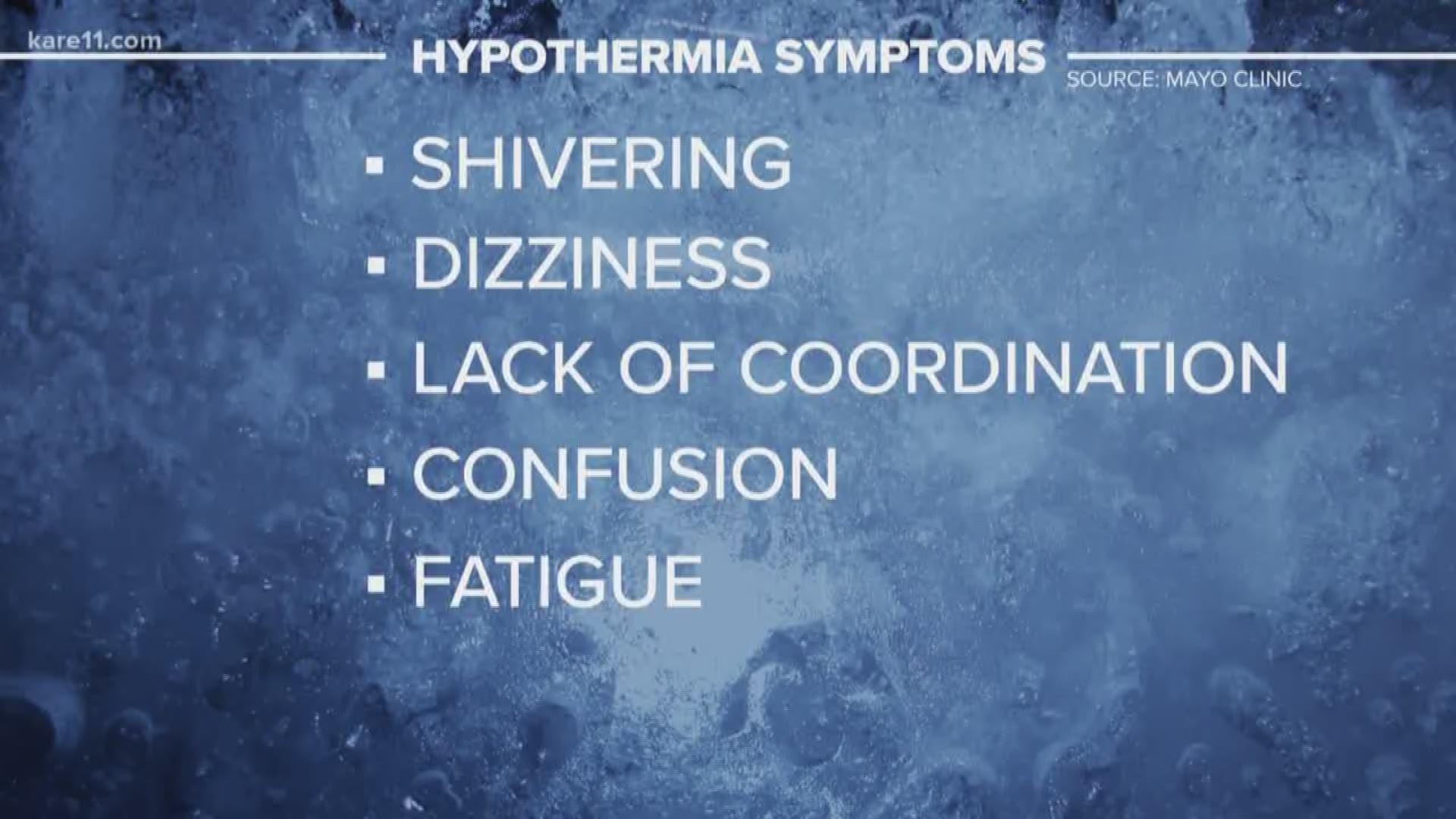DALLAS — A strong cold front will arrive Monday and it will bring the coldest air of the season so far.
Tuesday morning will feature lows in the 20s area-wide and wind chills in the teens and single digits.
The city is opening overflow shelters for homeless residents in anticipation of the freezing temps.
RELATED: City to open emergency shelter at Dallas Convention Center in anticipation of freezing forecast
MedStar is urging North Texans to protect themselves to prevent medical issues due to the cold weather.
Below is a list of tips released by MedStar officials with additional information from the CDC:
Lower Your Risk of Frostbite and Hypothermia
When exposed to cold temperatures, your body begins to lose heat faster than it can be produced. Follow the advice below to avoid cold-weather health problems such as frostbite and hypothermia:
- Wear cold weather appropriate clothing such as gloves/mittens, hats, scarves and snow boots.
- Dress in several layers of loose-fitting clothing, and cover your face and mouth if possible.
- Be aware of the wind chill factor. Wind can cause body-heat loss.
- Stay dry, and if you become wet, remove wet clothing immediately.
- Limit your time outdoors.
- Do not ignore shivering. It's an important first sign that the body is losing heat. Persistent shivering is a signal to return indoors.
Signs and Symptoms of Hypothermia
Hypothermia symptoms for adults include:
- Shivering, which may stop as hypothermia progresses (shivering is actually a good sign that a person's heat regulation systems are still active.)
- Slow, shallow breathing
- Confusion and memory loss
- Drowsiness or exhaustion
- Slurred or mumbled speech
- Loss of coordination, fumbling hands, stumbling steps
- A slow, weak pulse
- In severe hypothermia, a person may be unconscious without obvious signs of breathing or a pulse
Symptoms will look different for babies, however. If you notice bright red skin that is cold to the touch or your baby has very low energy, they may be experiencing hypothermia.
Who's most at risk?
Victims of hypothermia are often:
- Older adults with inadequate food, clothing, or heating
- Babies sleeping in cold bedrooms
- People who remain outdoors for long periods—the homeless, hikers, hunters, etc.
- People who drink alcohol or use illicit drugs.
Don’t wait – take action
Hypothermia is a medical emergency. If you notice any of the above signs, take the person’s temperature. If it is below 95° F, get medical attention immediately!
If you are not able to get medical help right away, try to warm the person up.
- Get the person into a warm room or shelter.
- Remove any wet clothing the person is wearing.
- Warm the center of the person’s body—chest, neck, head, and groin—using an electric blanket, if available. You can also use skin-to-skin contact under loose, dry layers of blankets, clothing, towels, or sheets.
- Warm drinks can help increase body temperature, but do not give alcoholic drinks. Do not try to give beverages to an unconscious person.
- After body temperature has increased, keep the person dry and wrap their body, including their head and neck, in a warm blanket.
- Get the person proper medical attention as soon as possible.
Signs and symptoms of frostbite
Frostbite is a type of injury caused by freezing. It leads to a loss of feeling and color in the areas it affects, usually extremities such as the nose, ears, cheeks, chin, fingers, and toes. Frostbite can permanently damage the body, and severe cases can lead to amputation (removing the affected body part).
If you notice redness or pain in any skin area, get out of the cold or protect any exposed skin—frostbite may be beginning. Any of the following signs may point to frostbite:
- A white or grayish-yellow skin area
- Skin that feels unusually firm or waxy
- Numbness
A person who has frostbite may not know they have it until someone else points it out because the frozen parts of their body are numb.
Don’t wait—take action
If you notice signs of frostbite on yourself or someone else, seek medical care. Check to see if the person is also showing signs of hypothermia. Hypothermia is a more serious condition and requires emergency medical care.
If (1) a person shows signs of frostbite, but no signs of hypothermia and (2) immediate medical care is not available, do the following:
- Get the person into a warm room as soon as possible.
- Unless absolutely necessary, do not walk on feet or toes that show signs of frostbite—this increases the damage.
- Do not rub the frostbitten area with snow or massage it at all. This can cause more damage.
- Put the areas affected by frostbite in warm—not hot—water (the temperature should be comfortable to the touch for unaffected parts of the body).
- If warm water is not available, warm the affected area using body heat. For example, you can use the heat of an armpit to warm frostbitten fingers.
- Do not use a heating pad, heat lamp, or the heat of a stove, fireplace, or radiator for warming. Affected areas are numb and can easily burn.
Avoid Exertion
- Cold weather puts an extra strain on the heart. If you have heart disease or high blood pressure, follow your doctor’s advice about performing other hard work in the cold.
- Otherwise, if you have to do heavy outdoor chores dress warmly and work slowly.
- Remember, your body is already working hard just to stay warm, so don’t overdo it.


Reduce Risk of Cold Temperature Injuries
- People are at risk for developing health problems from working in cold environments.
- Ensure that clothing and boots have adequate insulation.
- Dress in layers to help keep in body heat.
- Take frequent breaks out of the cold.
Avoid Carbon Monoxide
- Carbon monoxide is an odorless, colorless gas that is poisonous to breathe.
- Operate all gasoline-powered devices, such as gas-powered heaters outdoors and never bring them indoors.
- Also be careful when using other alternate heating sources such as stoves or grills. This will help to ensure your safety from carbon monoxide poisoning.
Check Often on Elderly or Chronically Ill Loved Ones
The elderly or people with chronic illnesses may be at risk for Hypothermia after prolonged exposure to even mildly cool temperatures.
- Check on older friends or relatives often during cold spells to be sure they are acting normally.

